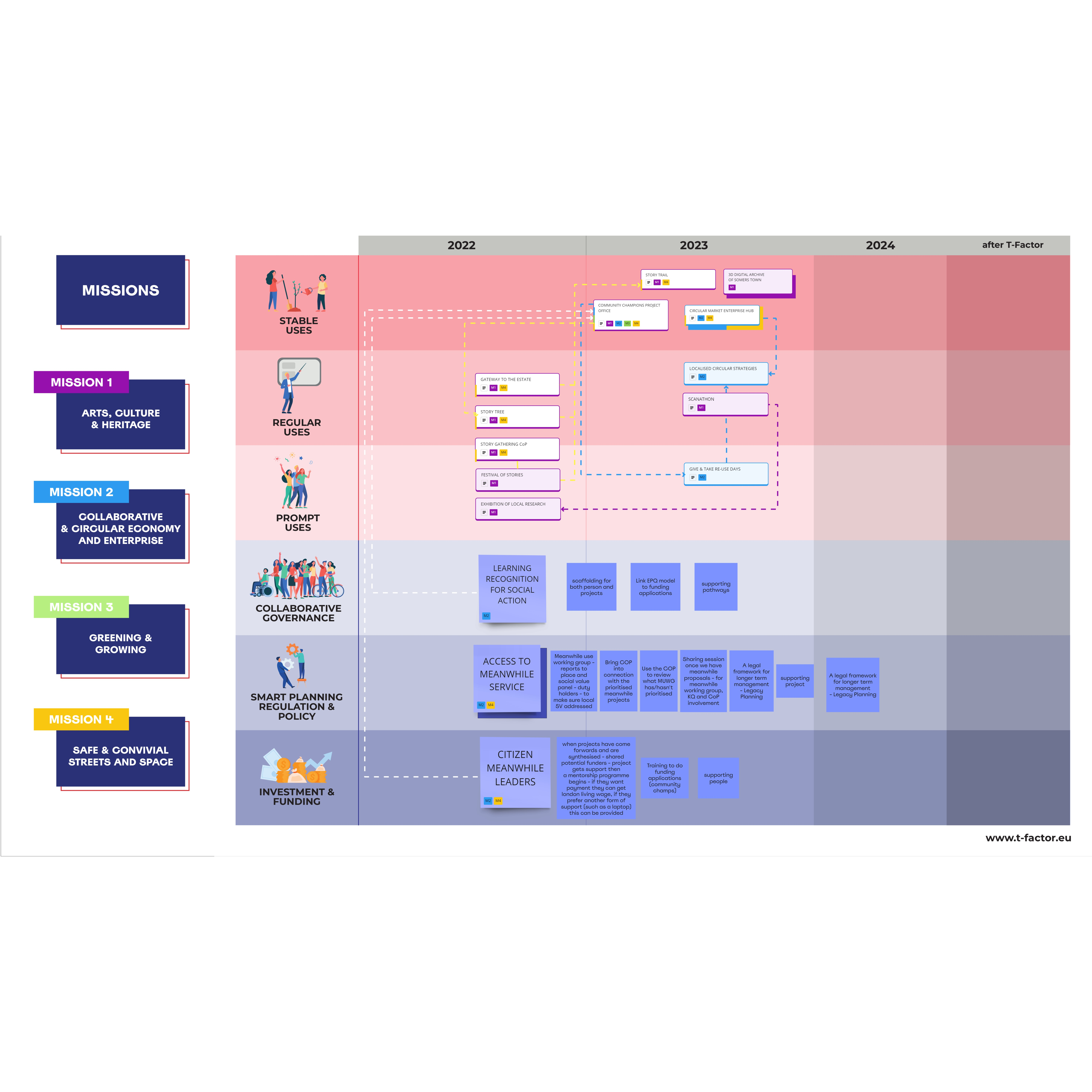Toolbox in Action
Explore how participatory meanwhile interventions unfolded in the context of seven regeneration initiatives across Europe & Asia.
Particularly suggested for policy-makers, practitioners, and researchers.
Theory of Change
Euston London
Euston, located in Central London, has been undergoing regeneration aimed at transforming the area into a modern transport and community destination, providing a new piece of city that delivers new homes, creates new jobs and open space. However, the project has faced significant delays and challenges with coordination of the various projects that will enable development. Euston’s pilot is aimed at ‘leveraging temporary uses to demonstrate and bring forward the benefits of inclusive, equitable and regenerative development’.
Celebrate and elevate the culture and heritage of Euston. It concentrated on organising interactive community workshops to preserve local history and heritage, and arts-led enhancement of public spaces in Regents Park Estate.
Reinvigorate Euston’s local economy by focusing on social and circular enterprises. This included organising workshops and enterprise programs to foster entrepreneurship, revitalising the historic Chalton Street Market and establishing a Circular Enterprise Hub.
Enhance the safety and appeal of Euston’s public areas. This included the creation of a Story Trail to link green spaces and narrate local history and the organisation of community festivals to foster engagement.
Explore Euston Portfolio

Privacy Overview
| Cookie | Duration | Description |
|---|---|---|
| cookielawinfo-checkbox-analytics | 11 months | This cookie is set by GDPR Cookie Consent plugin. The cookie is used to store the user consent for the cookies in the category "Analytics". |
| cookielawinfo-checkbox-necessary | 11 months | This cookie is set by GDPR Cookie Consent plugin. The cookies is used to store the user consent for the cookies in the category "Necessary". |
| CookieLawInfoConsent | 1 year | Used to save user's preferences about the cookies. |
| PHPSESSID | session | Preserves user session state across page requests. |
| viewed_cookie_policy | 11 months | The cookie is set by the GDPR Cookie Consent plugin and is used to store whether or not user has consented to the use of cookies. It does not store any personal data. |
| Cookie | Duration | Description |
|---|---|---|
| _ga | 2 years | This cookie is set by Google Analytics. It is used to identify unique users and it expires after 2 years. |
| _gat | 1 minute | This cookie is set by Google Analytics. It is used to by Google Analytics to throttle request rate. |
| _gid | 24 hours | This cookie is set by Google Analytics. It is used to identify unique users and it expires after 24 hours. |